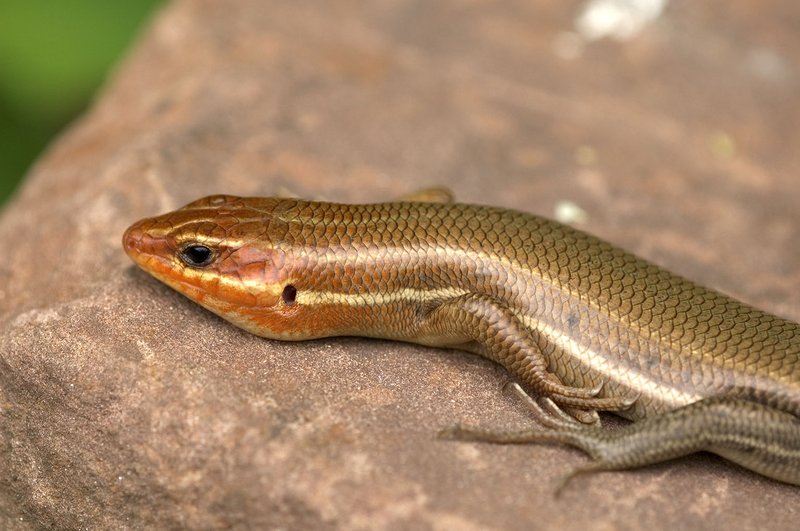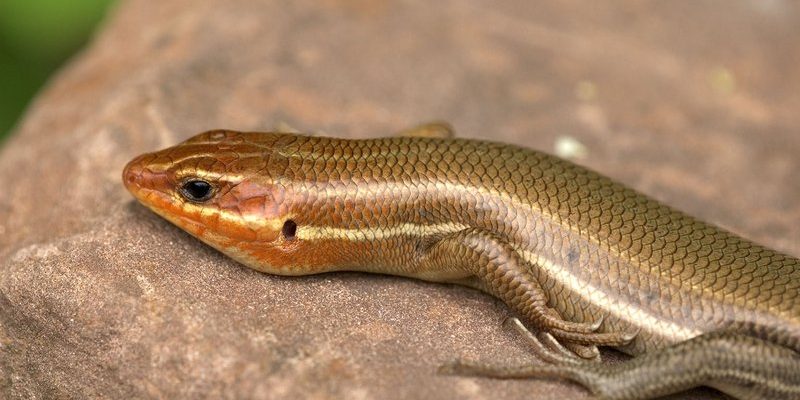
Skinks belong to a diverse family of lizards, which means they come in various shapes, sizes, and colors. They’re not just cute to look at; they play a crucial role in their ecosystems, helping to control insect populations and serving as prey for larger animals. So, how do these small reptiles manage to survive and even thrive in places where it seems like life would be impossible? Let’s dig deeper and explore the fascinating ways skinks adapt to their challenging habitats.
Unique Adaptations for Extreme Climates
Skinks have developed remarkable adaptations that help them cope with extreme climates. One of the most notable features is their scaly skin, which plays a crucial role in preventing water loss. Imagine wearing a raincoat on a drizzly day—skinks do something similar! Their scales create a barrier that keeps moisture locked inside, allowing them to survive in dry environments where water is scarce.
Additionally, skinks are excellent burrowers. When the sun scorches the ground, these clever creatures dig beneath the surface to find cooler, more comfortable temperatures. It’s like owning your very own underground air conditioning system! By hiding in the shade of burrows, they avoid the draining heat of the sun and reduce the risk of dehydration.
Coloration as a Survival Strategy
The colors of skinks are also more than just a pretty sight. Many species have developed camouflage to blend in with their surroundings. For example, a skink might have earthy tones to match the soil or rocky terrain. This ability to blend in helps them evade predators. Think of it like a game of hide and seek—if they can remain undetected, they stand a better chance of survival.
Some skinks even change color based on temperature. When it gets cooler, their skin can darken to absorb more heat. Conversely, when temperatures rise, they might lighten to reflect sunlight. This temperature regulation through coloration gives them a nifty advantage when it comes to surviving harsh conditions.
Diet and Foraging Strategies
Skinks are primarily insectivores, meaning their diet consists of bugs like crickets, beetles, and ants. This might sound simple, but in harsh environments, finding food can be a challenge. Skinks have evolved keen hunting skills to help them adapt. They use their sharp eyesight to spot prey from a distance, allowing them to conserve energy while they hunt.
Another interesting aspect of their diet is their ability to go without food for extended periods. In the wild, where resources can be scarce, this trait becomes essential. Imagine being able to skip a meal without it affecting your energy levels! Skinks can slow their metabolism, allowing them to survive longer without regular feeding. When food does become available, they can feast and regain their strength.
Behavioral Adaptations for Survival
Behavior plays a significant role in how skinks thrive in harsh environments. For instance, many skinks are active during the cooler parts of the day, like early morning or late afternoon. By avoiding the searing heat of midday, they reduce the risk of overheating and dehydration. It’s sort of like going for a jog in the evening when it’s cooler; smart, right?
They also have unique social behaviors. Some skinks live in groups, which provides safety in numbers. In a community, they watch each other’s backs and can alert one another to predators. This social structure increases their chances of survival in environments where threats are abundant.
Reproductive Strategies for Harsh Environments
Survival isn’t just about staying alive; it’s also about ensuring the next generation continues. Skinks have developed reproductive strategies that help them thrive even in challenging conditions. Depending on the species, skinks can lay eggs or give birth to live young, allowing them to adapt to their environments.
In environments with unpredictable conditions, some skinks opt for live birth, which can provide their young with a better chance of survival. By giving birth to live young, the mother bypasses the vulnerabilities of eggs, which can be easily preyed upon or suffer from environmental stress. Picture a mother protecting her newborns from the harsh world around them; this strategy can be a lifesaver.
Nesting Techniques for Protection
When it comes to nesting, skinks also showcase their adaptability. They often choose hidden locations for their nests, such as under rocks or in leaf litter, providing protection from potential predators. It’s like building a secret fort where the risk of danger is minimized. The location of the nest can be crucial for the survival of the young, especially in environments where threats are prevalent.
To add another layer of protection, some skinks engage in communal nesting. This means several females may lay their eggs close together, confusing predators and increasing the chances that at least some offspring will survive. It’s a clever example of teamwork in the animal kingdom!
The Role of Climate Change on Skink Survival
As climate change continues to impact the planet, skinks face new challenges in their struggle for survival. Rising temperatures, changing precipitation patterns, and habitat loss are just a few of the threats they encounter. Understanding these effects can help conservation efforts and ensure these resilient reptiles continue to thrive.
Some skink species are more adaptable than others, which can influence their resilience in the face of climate change. For instance, skinks in warmer regions may have a higher survival rate compared to those in more temperate climates. You might wonder how skinks will adapt to rapidly changing conditions; ongoing research is essential to answer that question.
While skinks have proven their ability to survive in harsh environments, their future may depend on human actions. By protecting their habitats and mitigating climate change, we can help ensure these fascinating animals continue to thrive in the wild.
Skinks are more than just little lizards; they’re impressive survivors that have adapted to overcome the challenges of harsh environments. From their hardy skin to their clever social behaviors, these creatures demonstrate resilience and resourcefulness. Whether it’s their unique reproductive strategies or their keen foraging skills, skinks have a lot to teach us about survival in tough conditions.
So next time you spot a skink basking in the sun, take a moment to appreciate the incredible lengths they go to adapt and thrive. Their journey is a testament to the wonders of evolution and the delicate balance of life in harsh environments. As we learn more about these remarkable reptiles, we can all play a part in ensuring their future.

